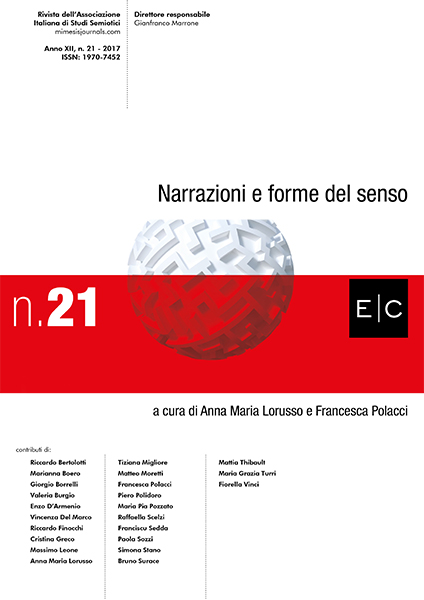Tracing Memory: How do Spatial Traces Work?
Abstract
The paper aims at considering how places of memory contribute to the collective macro-narration of past events that circulates in a society. Such macro-narration is the result of a complex and intertwined system of memory (Demaria 2012, Violi 2014), made of different kinds of “texts”, including places and public spaces and able to construct an image of the past recognized as “reality” by those who share it.
Hence, we will try to understand how places of memory represent past events as real, focusing on the role of those peculiar semiotic objects we call “spatial traces” which are often used as effective tools to increase the reliability of the narration developed in a place. After considering the semiotic debate on traces (Mazzucchelli 2010, 2015; Violi 2009, 2012, 2014), we will analyse a peculiar case: a museum created inside an ex Detention and Torture Center, in Cordoba (Argentina), which nowadays also hosts an Archive of Memory. This peculiar place of memory will prove to be an extraordinary example of the many kinds and forms of spatial traces, here displayed in the attempt of reconstructing the atrocities that took place in Argentina during the violent military dictatorship of ‘76 – ‘83.
Considering all these different traces, we will see that, regardless of the different substances of the expression, all these semiotic objects tend to work in the same way. Being “marked” by those events or simply being somehow related to the lives of the desaparecidos, all the traces express a unique sense of proximity with the past, acquiring a sort of testimonial role. Analyzing the different manners they are displayed and using the reflection of Charles S. Peirce about indexes, we will propose that traces are not “natural” signs, but the result of a three layered discourse that uses enunciational, narrative and “material” level of places in a peculiar way.
Finally, we will conclude that a trace triggers a specific form of interpretation, which leads us to consider it as it was directly, brutally connected to the specific subject or event to which it is related. Therefore, the experience of contact with the materiality of the traces, regardless their “actual” authenticity, is what transforms them in evidences of the past. This is what gives to memory places such an important and central role in a system of memory, allowing them to reinforce or transform our collective image of the past.



